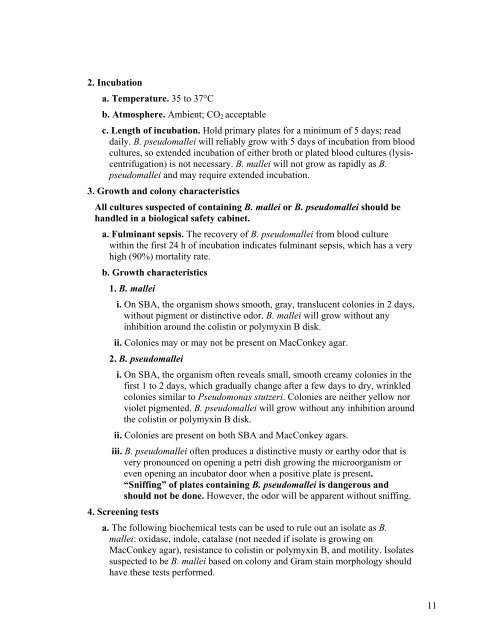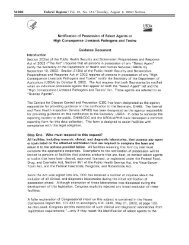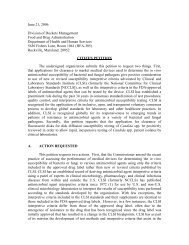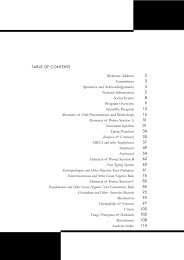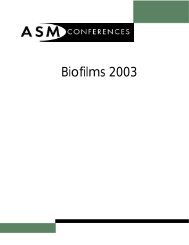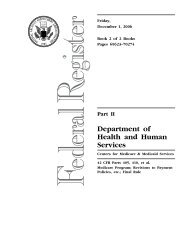Burkholderia mallei and B. pseudomallei - Microbiology - American ...
Burkholderia mallei and B. pseudomallei - Microbiology - American ...
Burkholderia mallei and B. pseudomallei - Microbiology - American ...
Create successful ePaper yourself
Turn your PDF publications into a flip-book with our unique Google optimized e-Paper software.
2. Incubationa. Temperature. 35 to 37°Cb. Atmosphere. Ambient; CO 2 acceptablec. Length of incubation. Hold primary plates for a minimum of 5 days; readdaily. B. pseudo<strong>mallei</strong> will reliably grow with 5 days of incubation from bloodcultures, so extended incubation of either broth or plated blood cultures (lysiscentrifugation)is not necessary. B. <strong>mallei</strong> will not grow as rapidly as B.pseudo<strong>mallei</strong> <strong>and</strong> may require extended incubation.3. Growth <strong>and</strong> colony characteristicsAll cultures suspected of containing B. <strong>mallei</strong> or B. pseudo<strong>mallei</strong> should beh<strong>and</strong>led in a biological safety cabinet.a. Fulminant sepsis. The recovery of B. pseudo<strong>mallei</strong> from blood culturewithin the first 24 h of incubation indicates fulminant sepsis, which has a veryhigh (90%) mortality rate.b. Growth characteristics1. B. <strong>mallei</strong>i. On SBA, the organism shows smooth, gray, translucent colonies in 2 days,without pigment or distinctive odor. B. <strong>mallei</strong> will grow without anyinhibition around the colistin or polymyxin B disk.ii. Colonies may or may not be present on MacConkey agar.2. B. pseudo<strong>mallei</strong>i. On SBA, the organism often reveals small, smooth creamy colonies in thefirst 1 to 2 days, which gradually change after a few days to dry, wrinkledcolonies similar to Pseudomonas stutzeri. Colonies are neither yellow norviolet pigmented. B. pseudo<strong>mallei</strong> will grow without any inhibition aroundthe colistin or polymyxin B disk.ii. Colonies are present on both SBA <strong>and</strong> MacConkey agars.iii. B. pseudo<strong>mallei</strong> often produces a distinctive musty or earthy odor that isvery pronounced on opening a petri dish growing the microorganism oreven opening an incubator door when a positive plate is present.“Sniffing” of plates containing B. pseudo<strong>mallei</strong> is dangerous <strong>and</strong>should not be done. However, the odor will be apparent without sniffing.4. Screening testsa. The following biochemical tests can be used to rule out an isolate as B.<strong>mallei</strong>: oxidase, indole, catalase (not needed if isolate is growing onMacConkey agar), resistance to colistin or polymyxin B, <strong>and</strong> motility. Isolatessuspected to be B. <strong>mallei</strong> based on colony <strong>and</strong> Gram stain morphology shouldhave these tests performed.11


